Call for Insights
IEEE Software prompts seasoned practitioners to share their knowledge, experience and stories
Do you have practical software engineering experience that is worth exchanging? Maybe you have blogged about it or presented it at a conference? And you would like to publish an article on it now? If so, you may want to consider a submission for the Insights department at IEEE Software.
Insights is a place to write up valuable knowledge nuggets. It gives a voice to busy software professionals so that their stories are heard. This department’s goal is to share and exchange real-world experience and take a snapshot of where practical software engineering has been, is now, and is heading towards.
The magazine offers:
- Coaching and mentoring, e.g. about suited topics and article scoping
- Informal reviews prior to submission
- An official peer review
- Professional editing support (when article has been accepted for publication)
- Ultimately, an official publication that can be cited (referenced) and that is listed in digital libraries such as IEEE Xplore and DBLP.
You can submit short insight stories (2-3 pages) or full experience reports (up to 2800 words, figures/tables count for 250 words).
A submissions should answer a subset of the following questions (detailed authoring guidelines and a submission template are available upon request):
Scenario Viewpoint/Project Management
- What kind of project and system would you like to describe (e.g., fixed price/full scope contract work vs. self-funded development experiment; functional domain/industry sector, application genre, usage scenarios; green field vs. integration/extension vs. legacy system modernization)?
- Did you use any recognized or company-internal software engineering methodology to plan/execute the project and construct the system (e.g., during analysis and design)? If so, which one (and why)? If not, why not?
- Did the presented solution go live, and, if so, how many users and workload does it typically serve per day/week/month, during normal operations and during peaks?
Business Context/Project Inception
- Who were the most important stakeholders (or stakeholder roles) and their key concerns (e.g. personas with stories, feature wishlists, desired quality attributes)?
- If you had to describe the project vision and problem statement in one sentence, what would that sentence be?
- Which elements of technical (and organizational/commercial) risk were you confronted with (or did you take), and how did you manage and mitigate these risks?
Design/Elaboration
- Did you apply any recognized tactics and patterns from the literature and, if so, how? If not, did you come up with your own reproducible/reusable design elements?
- What were your three most relevant architectural decisions: a) how did you know what to decide, b) how did you find and evaluate design alternatives, c) how did you select from these? d) Are you still content with these decisions, are their justifications still valid?
- Would you like to share any thoughts on modelling and notation (e.g. usage of Architecture Description Languages (ADLs) and Domain-Specific Languages (DSLs) – for instance, why did you model which parts of the system, or why did you decide not to apply any modelling techniques, notations, and tools?
Implementation/Construction
- Would you consider the project to be an agile one? If so, which principles and practices did you apply and how were they received by the stakeholders?
- Which software engineering tools and/or middleware did you use, and how did these assets help achieving the project goals within budget (analysis, design, development, test, support, etc.)?
- How did you test that the functional and non-functional requirements were satisfied? Did you apply any additional validation (quality assurance, evaluation) activities (e.g. code reviews, test automation)?
Overall Retrospective
- What worked well and what did not work well? Are there any "mysteries" left (i.e., things we do not know yet, open research problems)? Which lesson(s) did you learn on this project (e.g. method or pattern use, technology adoption, collaboration with open source communities)? What will you do differently next time?
- How much and what kind of technical debt did you accumulate since the project start and how do you deal with it?
- Which concluding thoughts would you like to share?
Please contact Olaf Zimmermann or Cesare Pautasso to submit an Insights story or an experience report or if you have questions about this opportunity. We look forward to your submissions!
Submitted by cp on

 How to Turn Ethical Values Into System Requirements: Lessons Learned from Adopting a New IEEE Standard in the Business World
How to Turn Ethical Values Into System Requirements: Lessons Learned from Adopting a New IEEE Standard in the Business World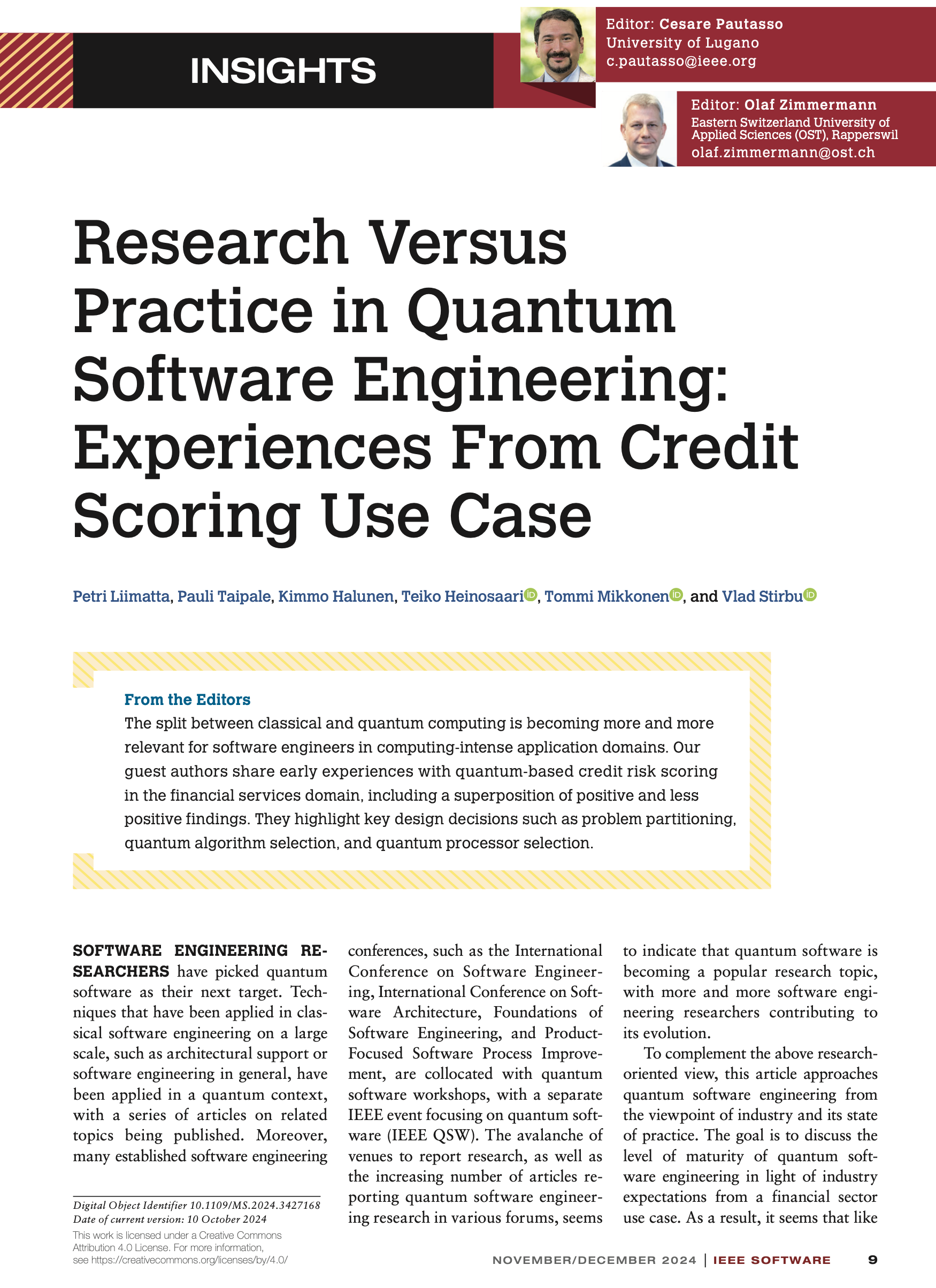 Research Versus Practice in Quantum Software Engineering: Experiences From Credit Scoring Use Case
Research Versus Practice in Quantum Software Engineering: Experiences From Credit Scoring Use Case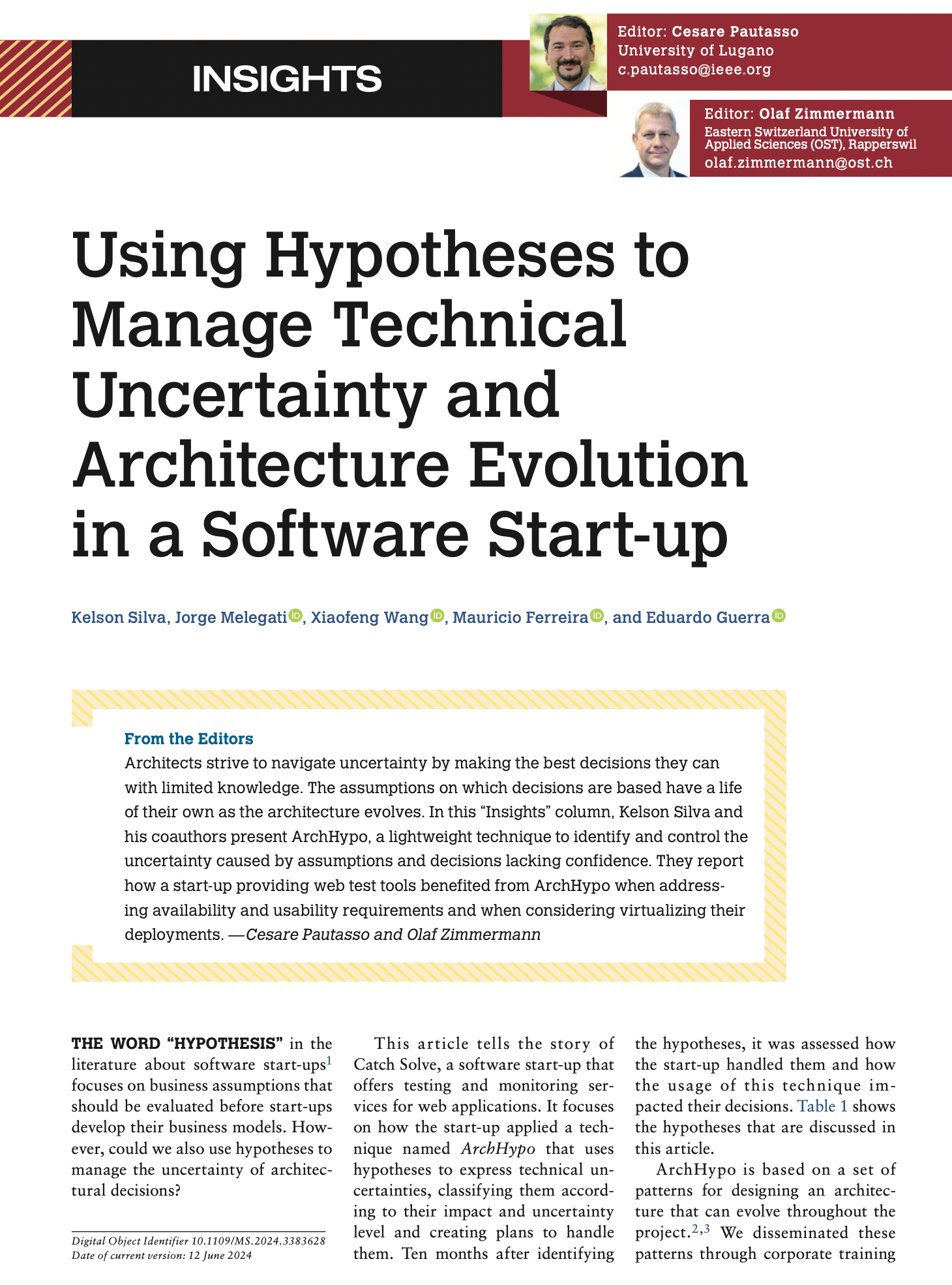 Using Hypotheses to Manage Technical Uncertainty and Architecture Evolution in a Software Start-up
Using Hypotheses to Manage Technical Uncertainty and Architecture Evolution in a Software Start-up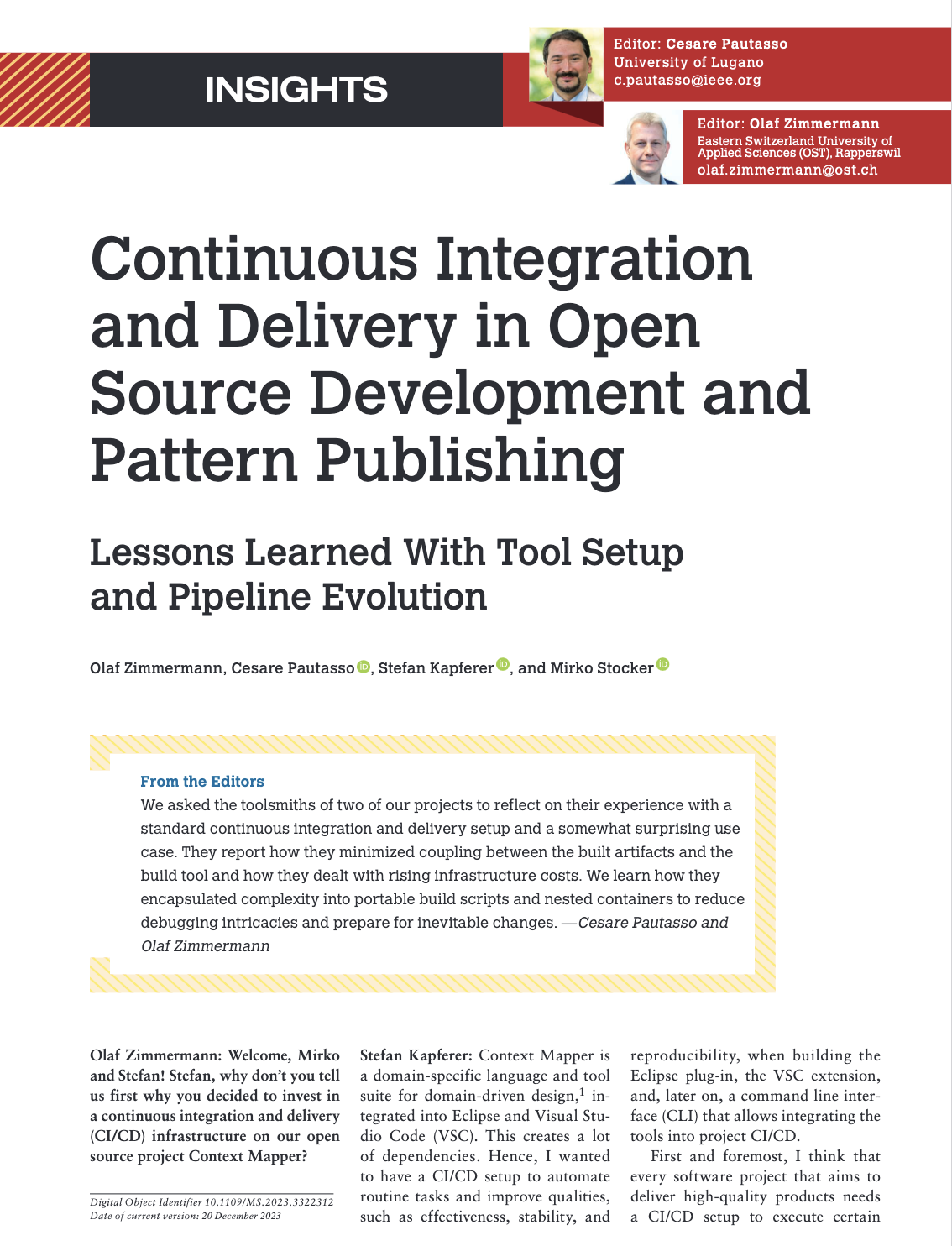 Continuous Integration and Delivery in Open Source Development and Pattern Publishing: Lessons Learned With Tool Setup and Pipeline Evolution
Continuous Integration and Delivery in Open Source Development and Pattern Publishing: Lessons Learned With Tool Setup and Pipeline Evolution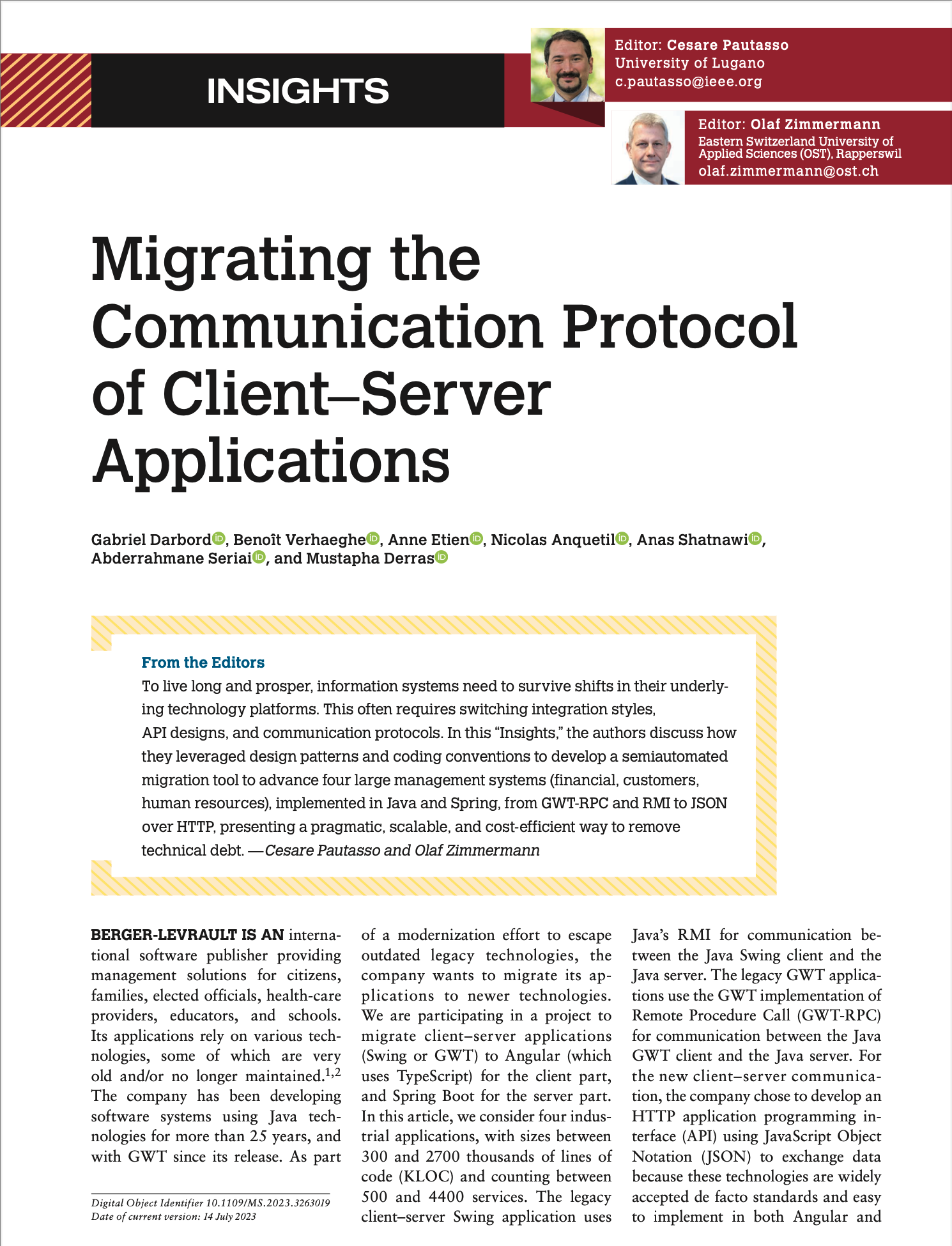 Migrating the Communication Protocol of Client–Server Applications
Migrating the Communication Protocol of Client–Server Applications Creating a Low-Code Business Process Execution Platform With Python, BPMN, and DMN
Creating a Low-Code Business Process Execution Platform With Python, BPMN, and DMN Developing a Microservices Integration Layer for Next-Generation Rail Operations Centers
Developing a Microservices Integration Layer for Next-Generation Rail Operations Centers Medical Software Needs Calm Compliance
Medical Software Needs Calm Compliance Automated Payment Terminal Testing: How to Achieve Continuous Integration for Systems That Are Almost Impossible to Virtualize
Automated Payment Terminal Testing: How to Achieve Continuous Integration for Systems That Are Almost Impossible to Virtualize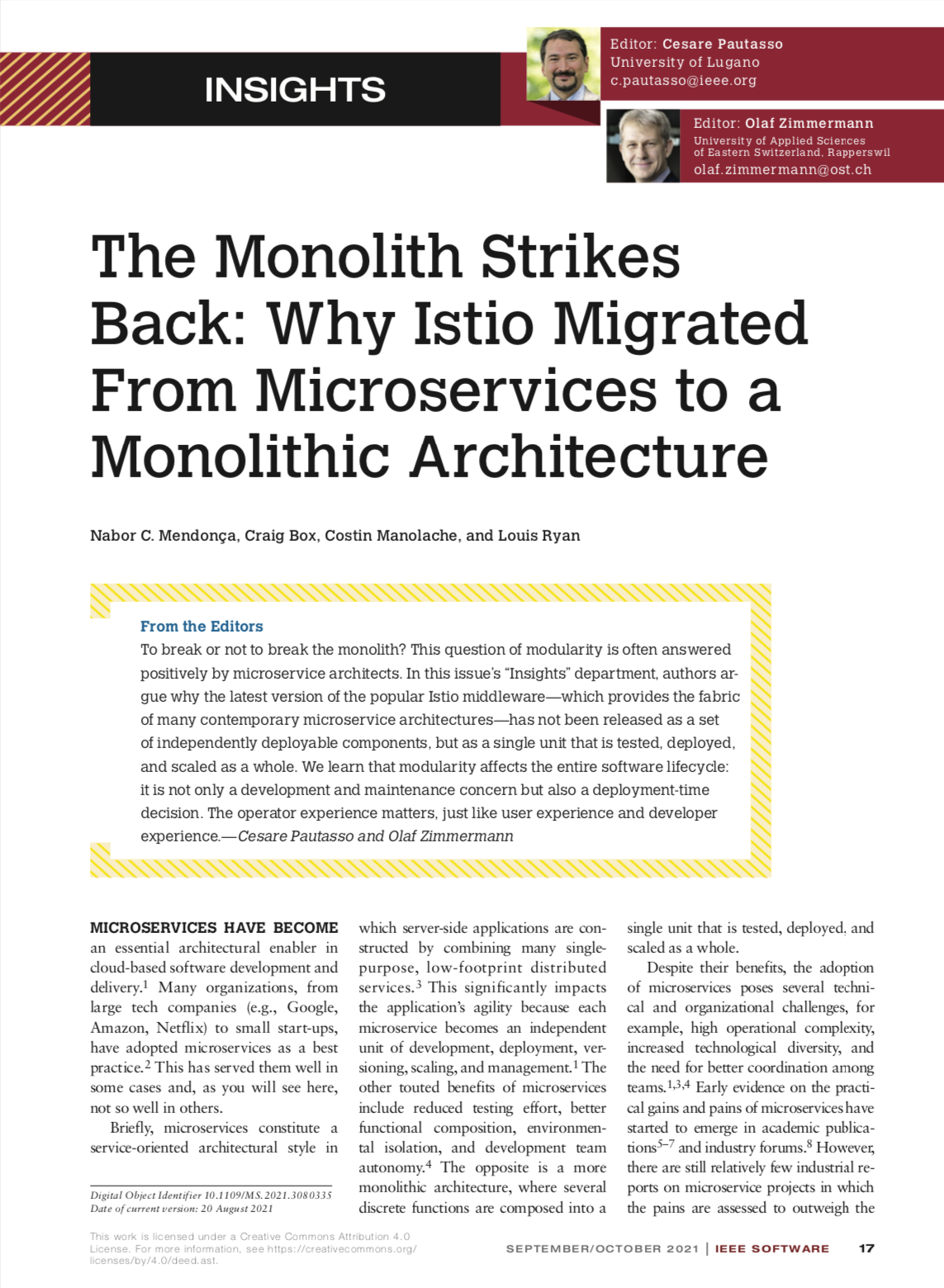 The Monolith Strikes Back: Why Istio Migrated From Microservices to a Monolithic Architecture
The Monolith Strikes Back: Why Istio Migrated From Microservices to a Monolithic Architecture What is the future of modeling?
What is the future of modeling? Controlling the Controllers: What Software People Can Learn From Control Theory
Controlling the Controllers: What Software People Can Learn From Control Theory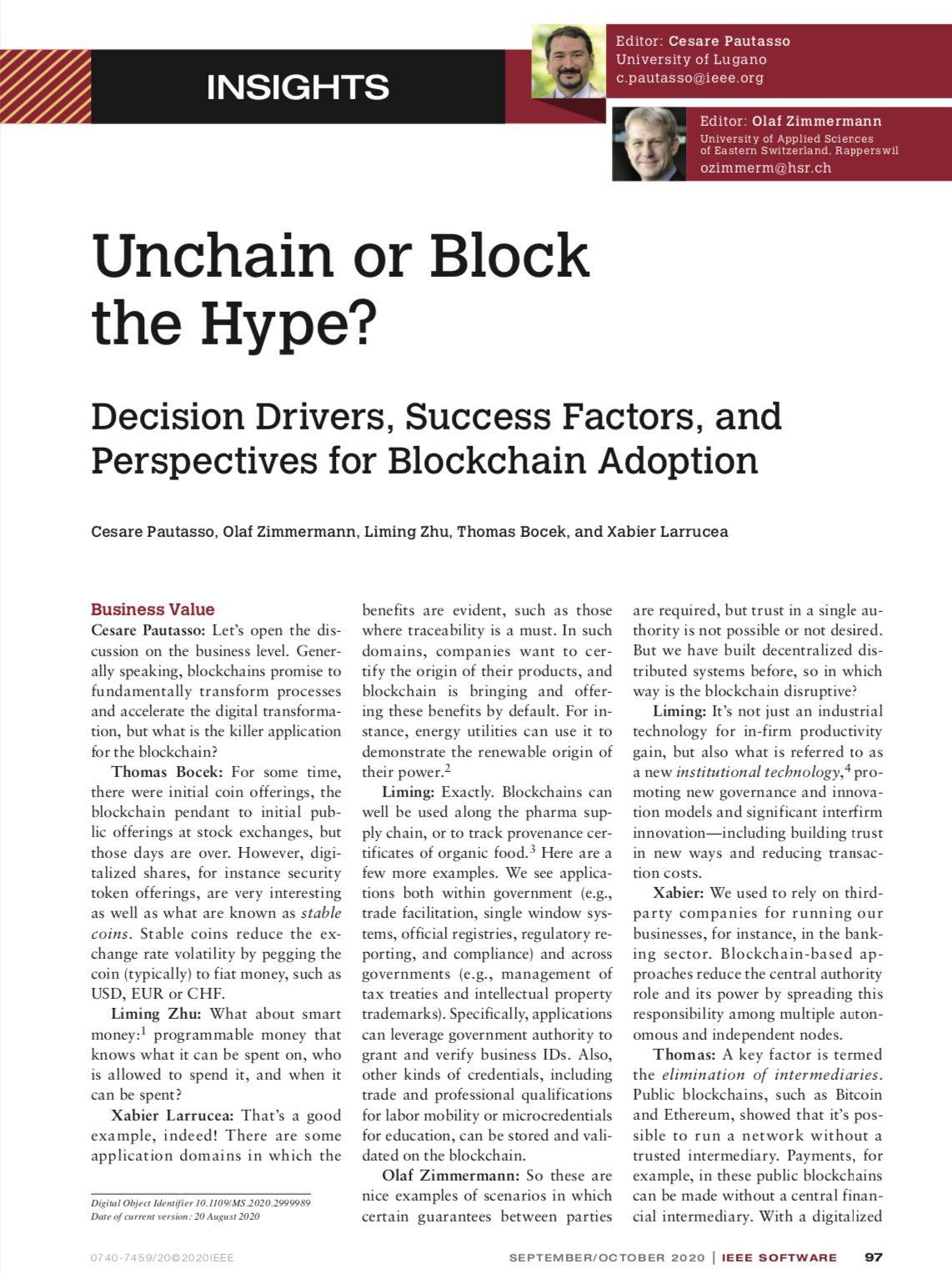 Unchain or Block the Hype?
Unchain or Block the Hype?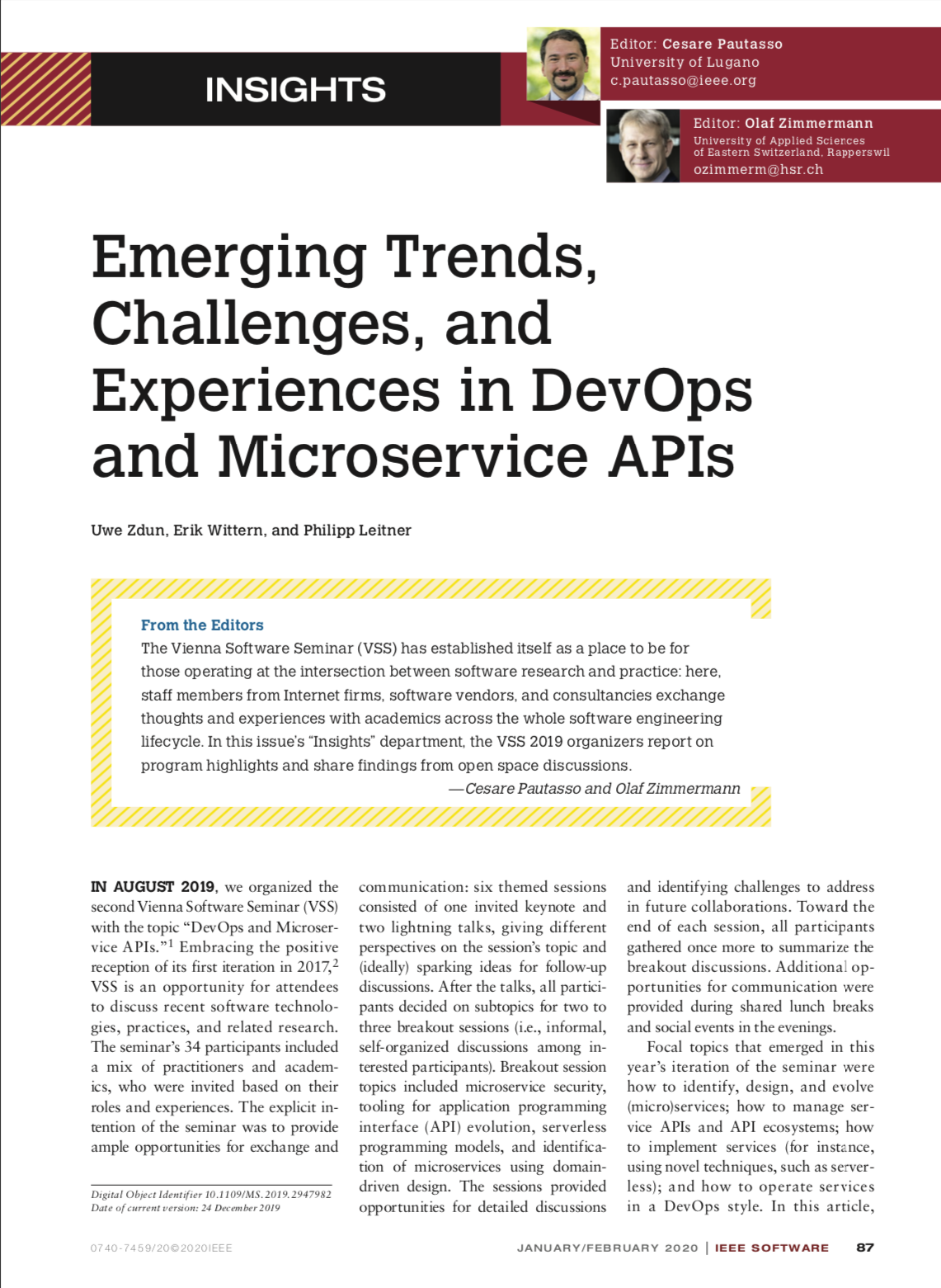 Emerging Trends, Challenges, and Experiences in DevOps and Microservice APIs
Emerging Trends, Challenges, and Experiences in DevOps and Microservice APIs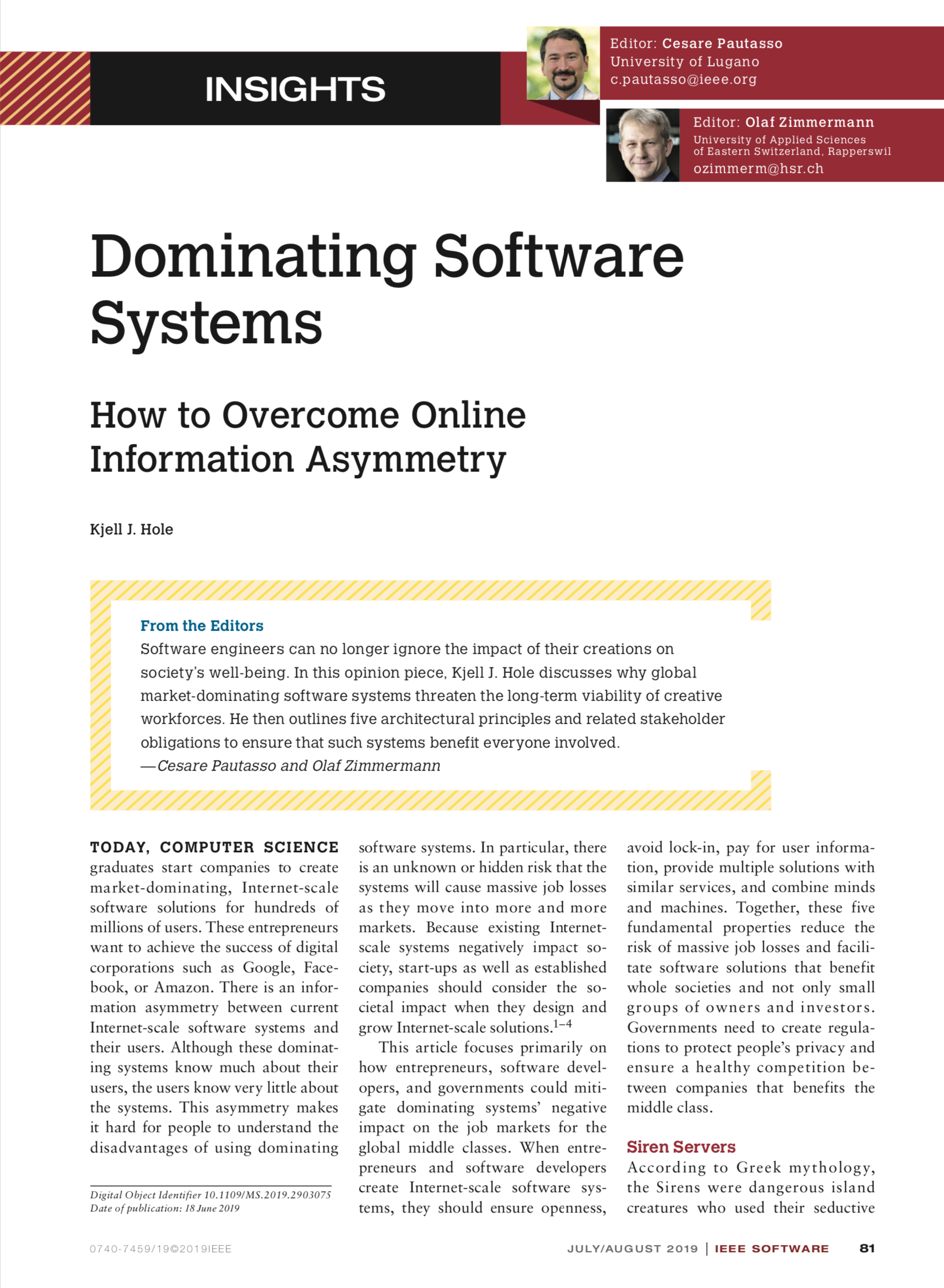 Dominating Software Systems: How to Overcome Online Information Asymmetry
Dominating Software Systems: How to Overcome Online Information Asymmetry Software Reuse in the Era of Opportunistic Design
Software Reuse in the Era of Opportunistic Design Making Companies Nimble—From Software Agility to Business Agility: A Conversation With the Authors
Making Companies Nimble—From Software Agility to Business Agility: A Conversation With the Authors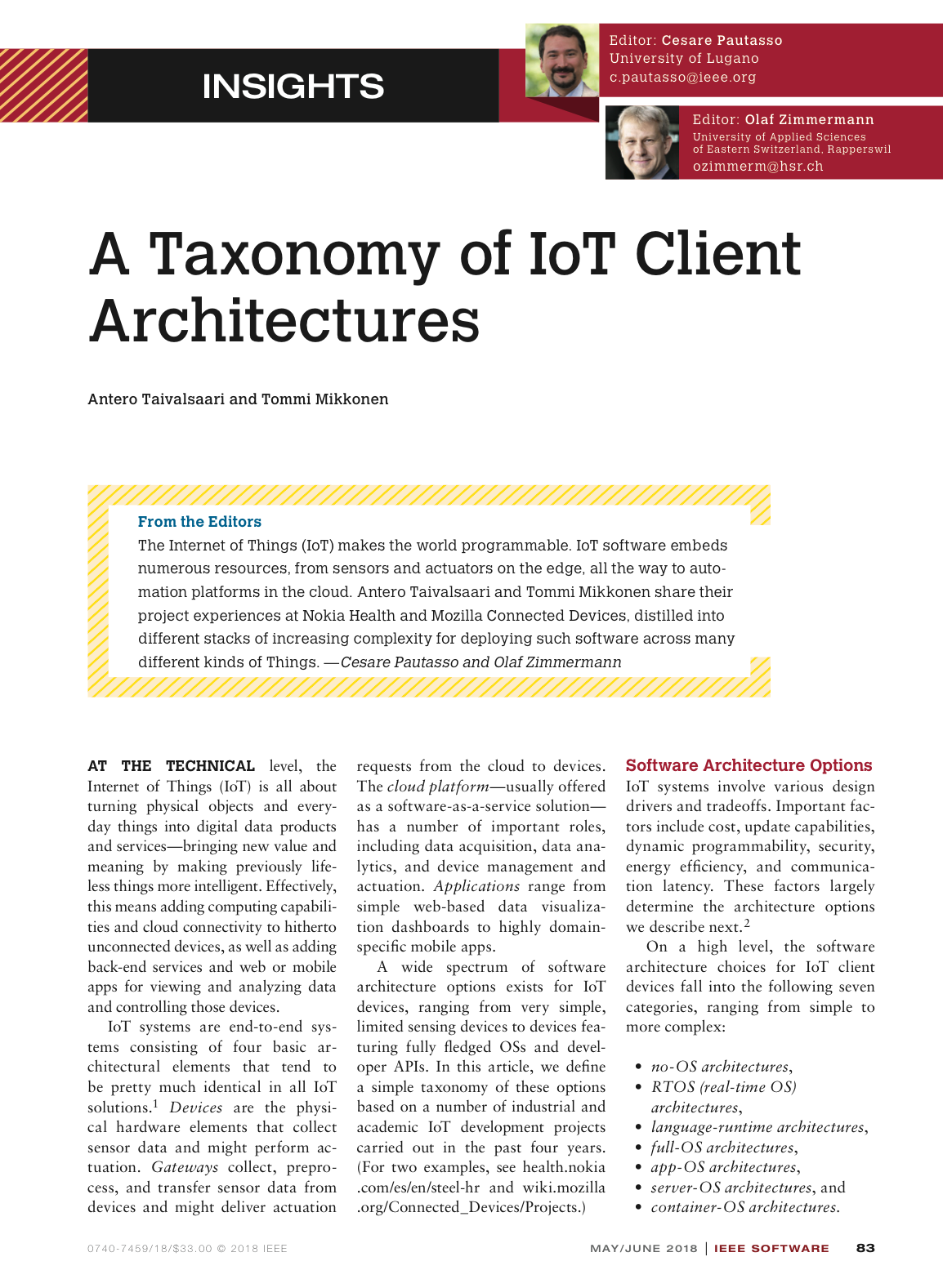 A Taxonomy of IoT Client Architectures
A Taxonomy of IoT Client Architectures Making Sense of Agile Methods
Making Sense of Agile Methods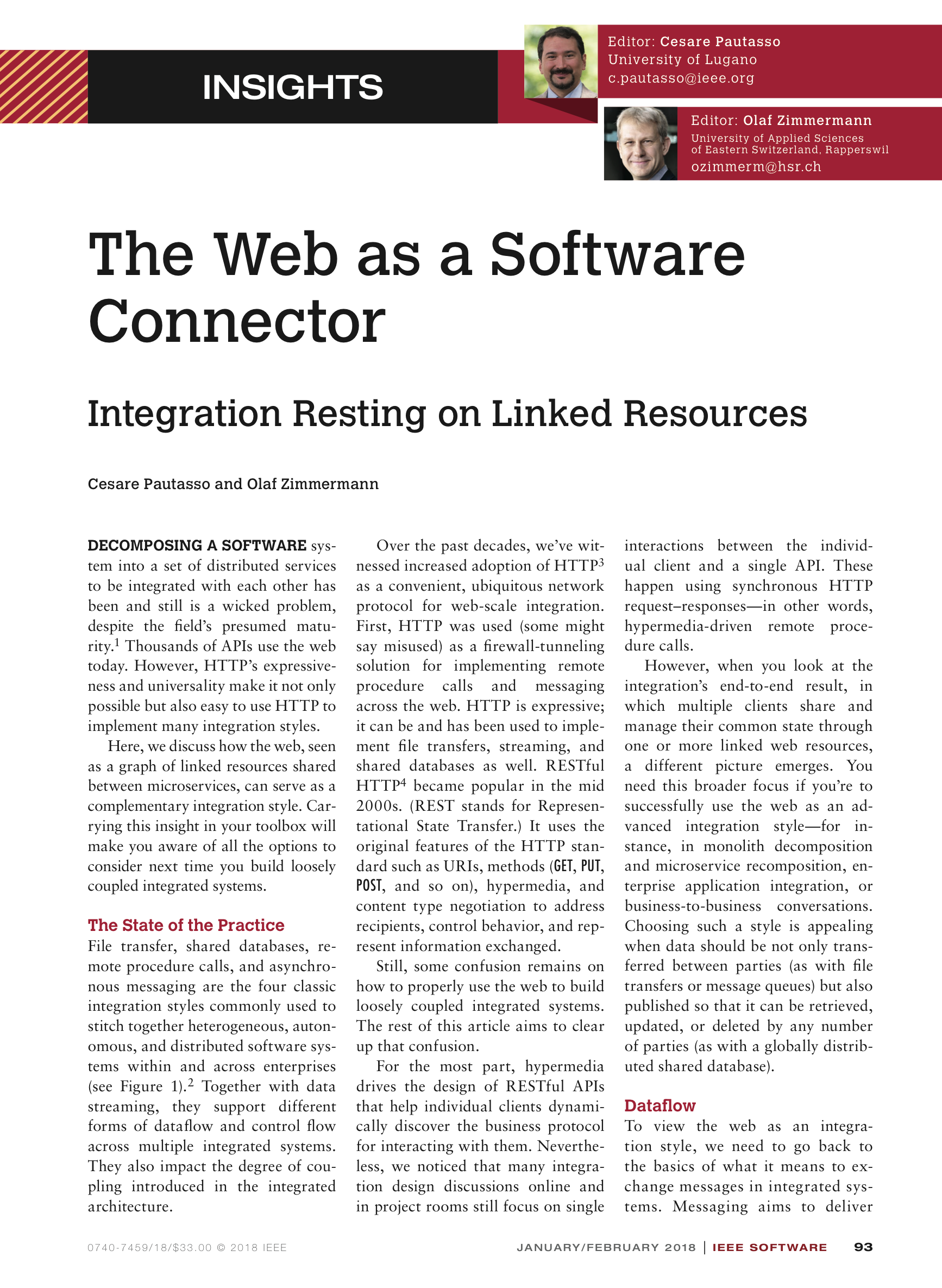 The Web as a Software Connector: Integration Resting on Linked Resources
The Web as a Software Connector: Integration Resting on Linked Resources Adaptable Blockchain-Based Systems: A Case Study for Product Traceability
Adaptable Blockchain-Based Systems: A Case Study for Product Traceability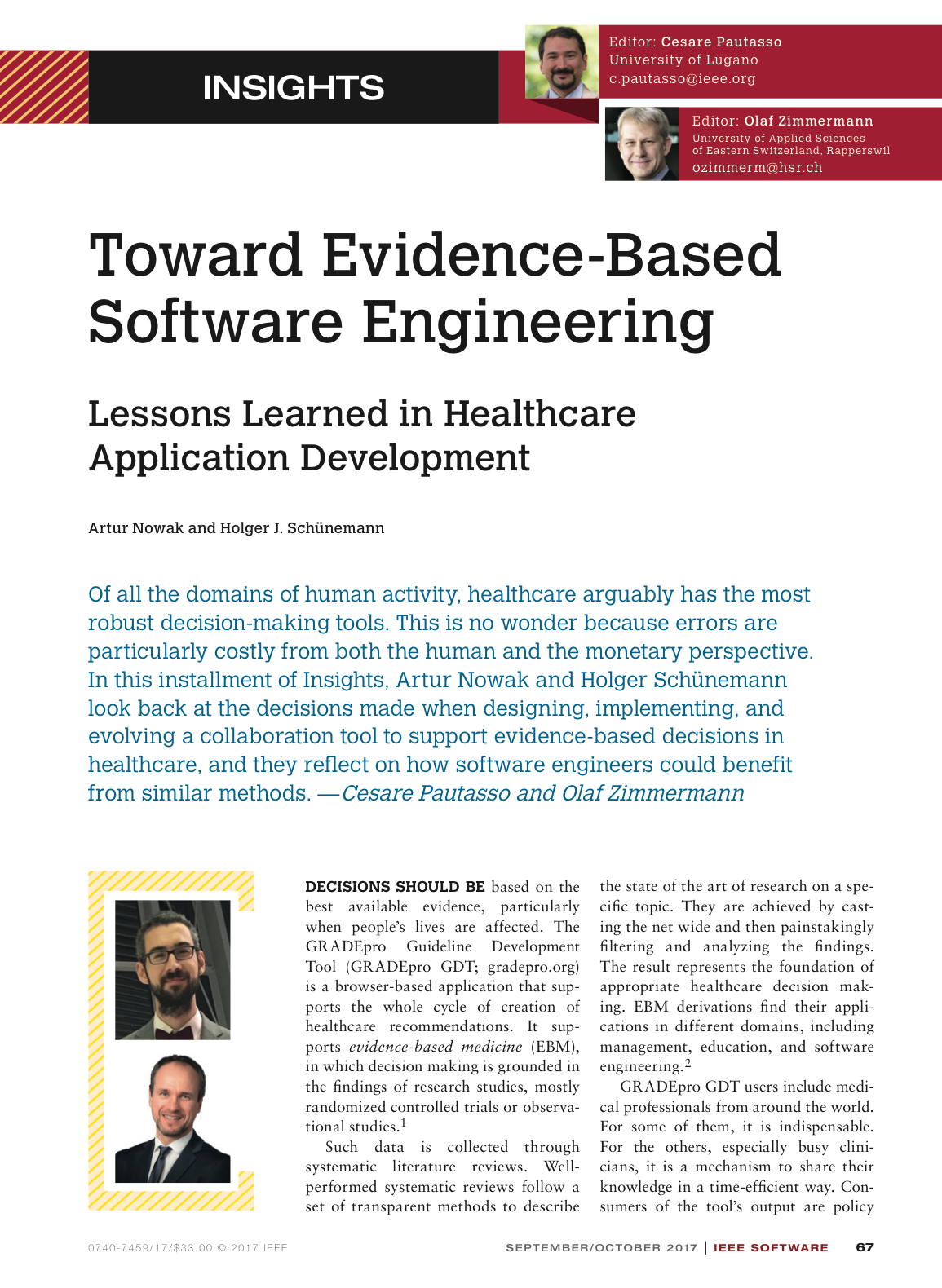 Toward Evidence-Based Software Engineering: Lessons Learned in Healthcare Application Development
Toward Evidence-Based Software Engineering: Lessons Learned in Healthcare Application Development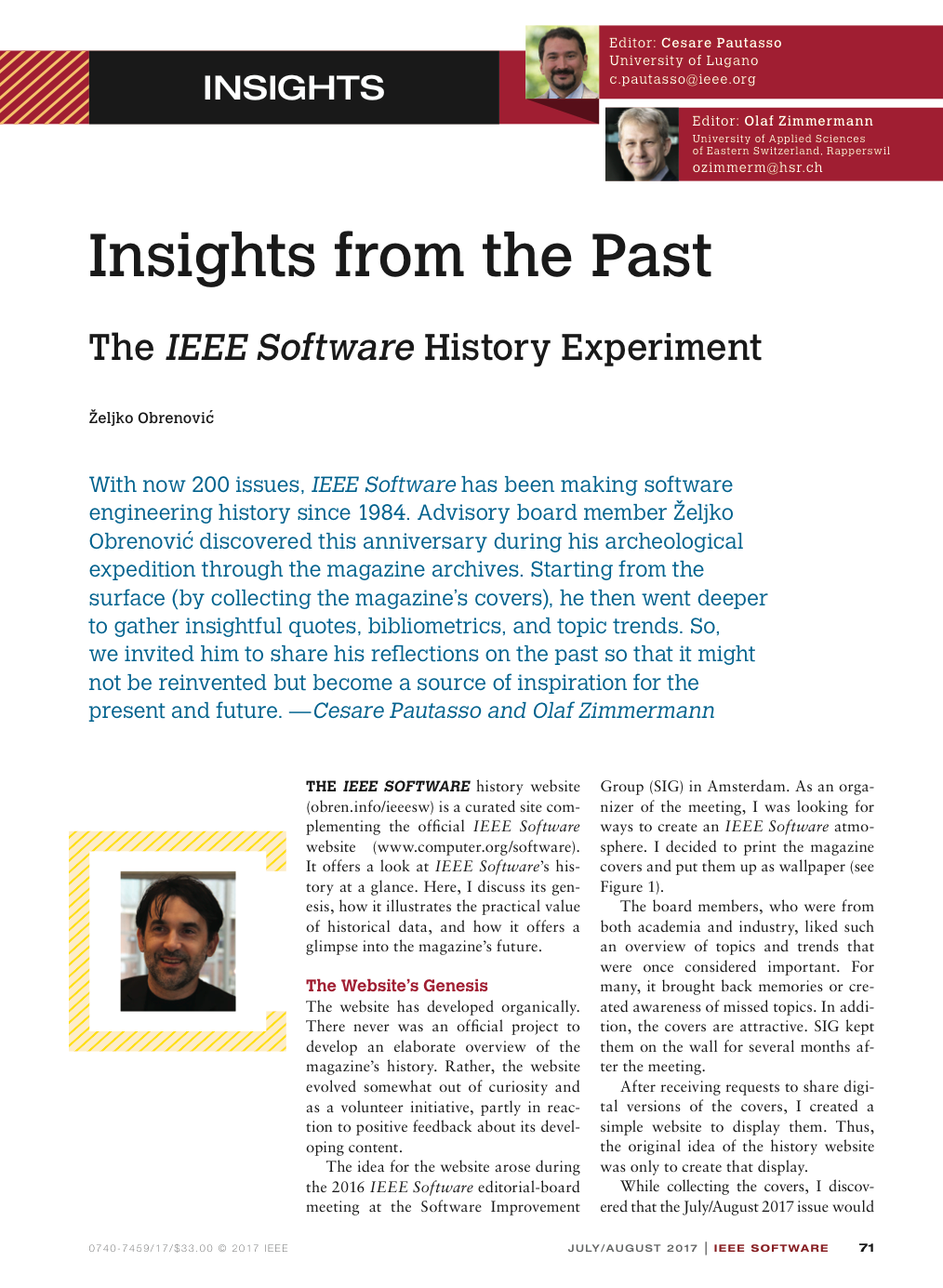 Insights from the Past: The IEEE Software History Experiment
Insights from the Past: The IEEE Software History Experiment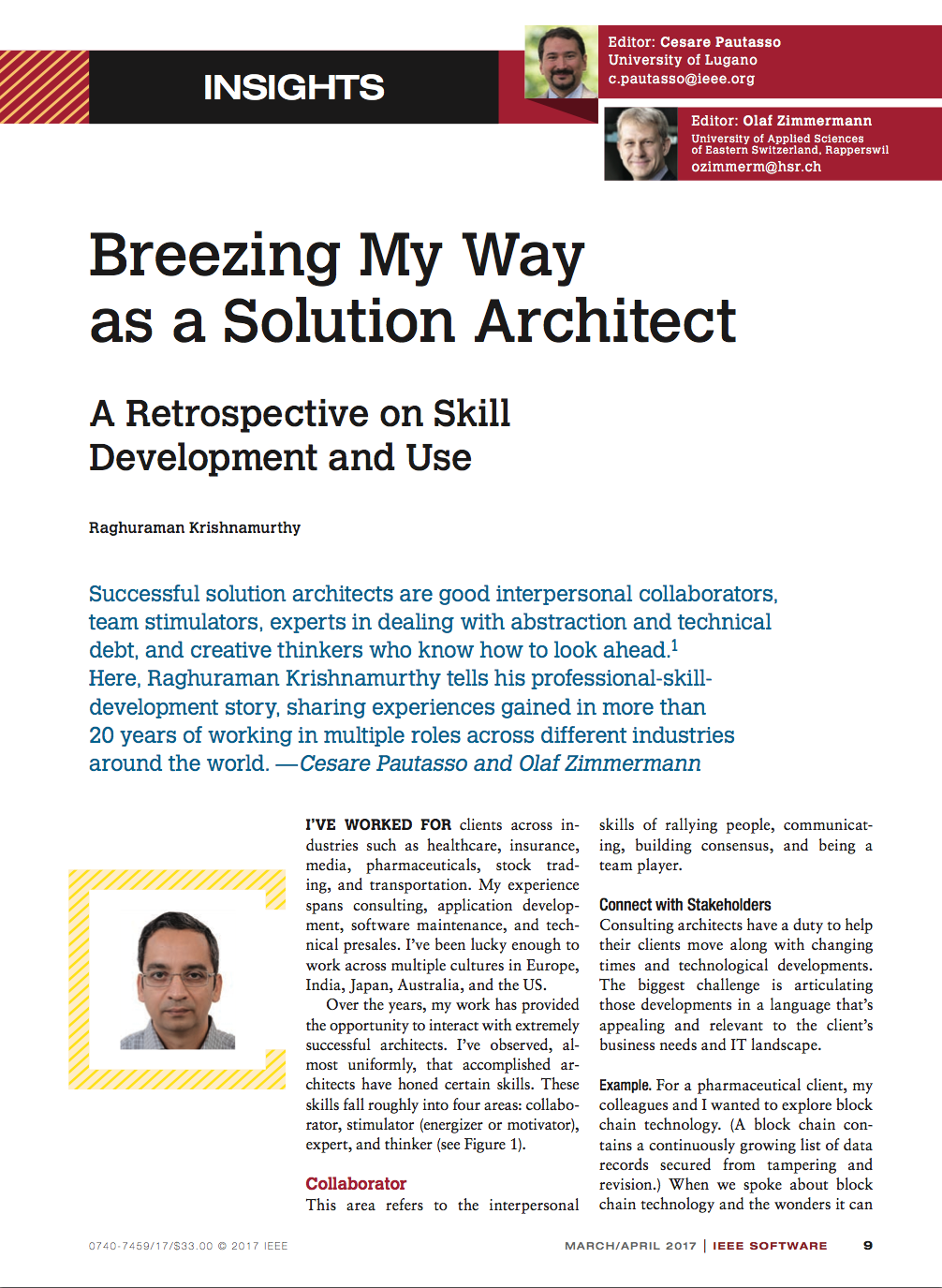 Breezing My Way as a Solution Architect: A Retrospective on Skill Development and Use
Breezing My Way as a Solution Architect: A Retrospective on Skill Development and Use Microservices in Practice (Part 2): Service Integration and Sustainability
Microservices in Practice (Part 2): Service Integration and Sustainability Microservices in Practice (Part 1): Reality Check and Service Design
Microservices in Practice (Part 1): Reality Check and Service Design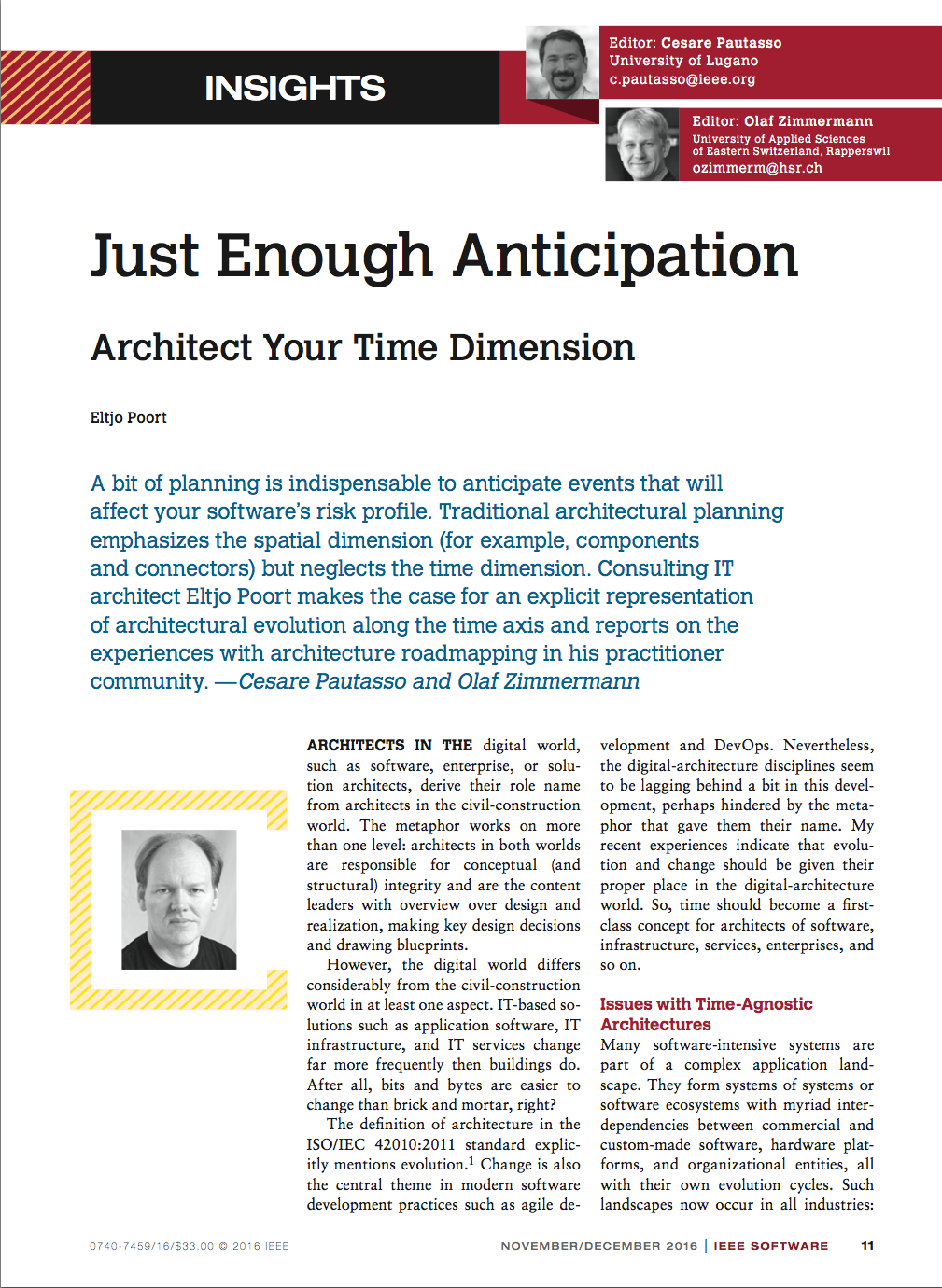 Just Enough Anticipation: Architect Your Time Dimension
Just Enough Anticipation: Architect Your Time Dimension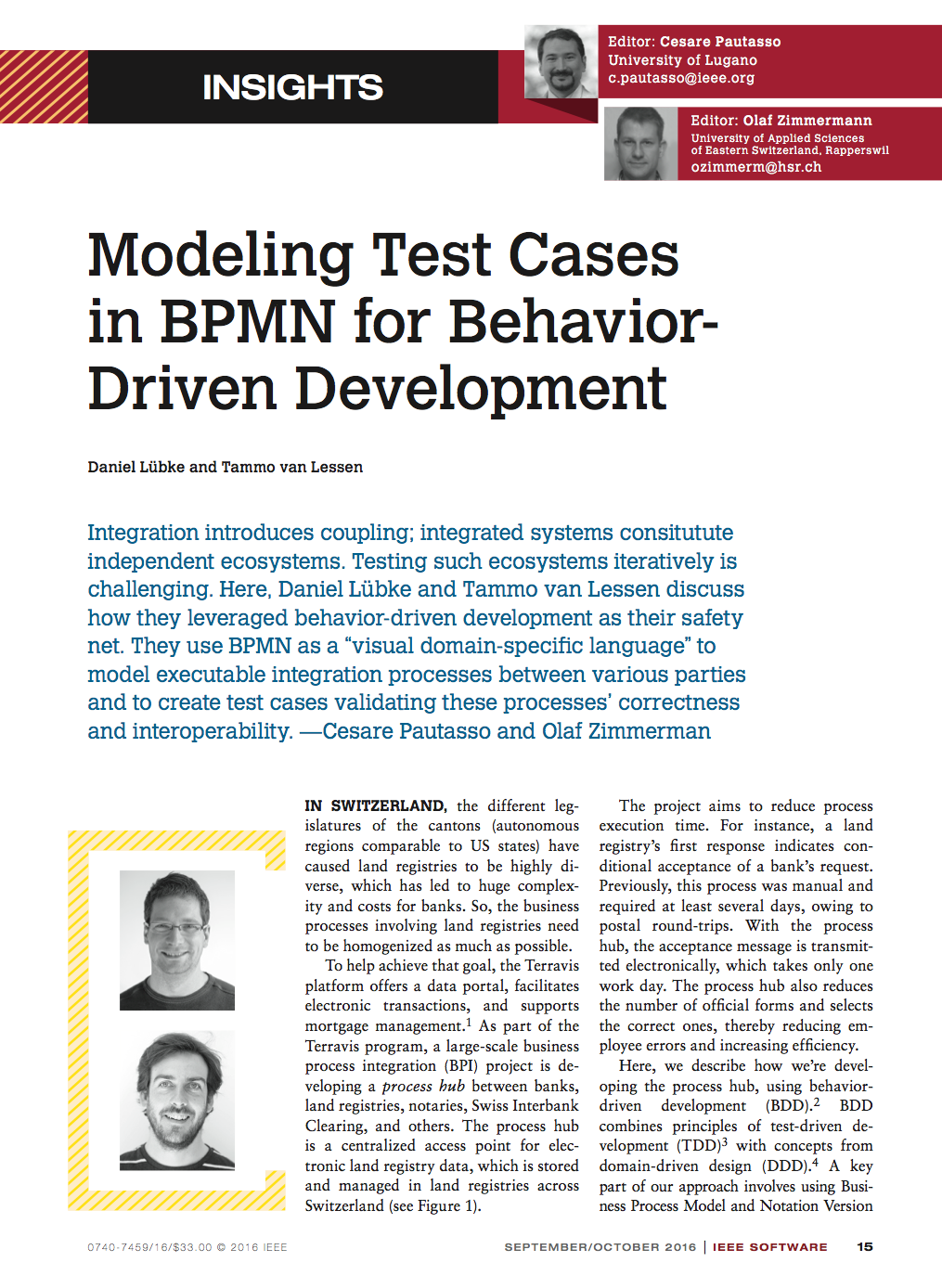 Modeling Test Cases in BPMN for Behavior-Driven Development
Modeling Test Cases in BPMN for Behavior-Driven Development Piloting a Mobile-App Ecosystem for Smart Farming
Piloting a Mobile-App Ecosystem for Smart Farming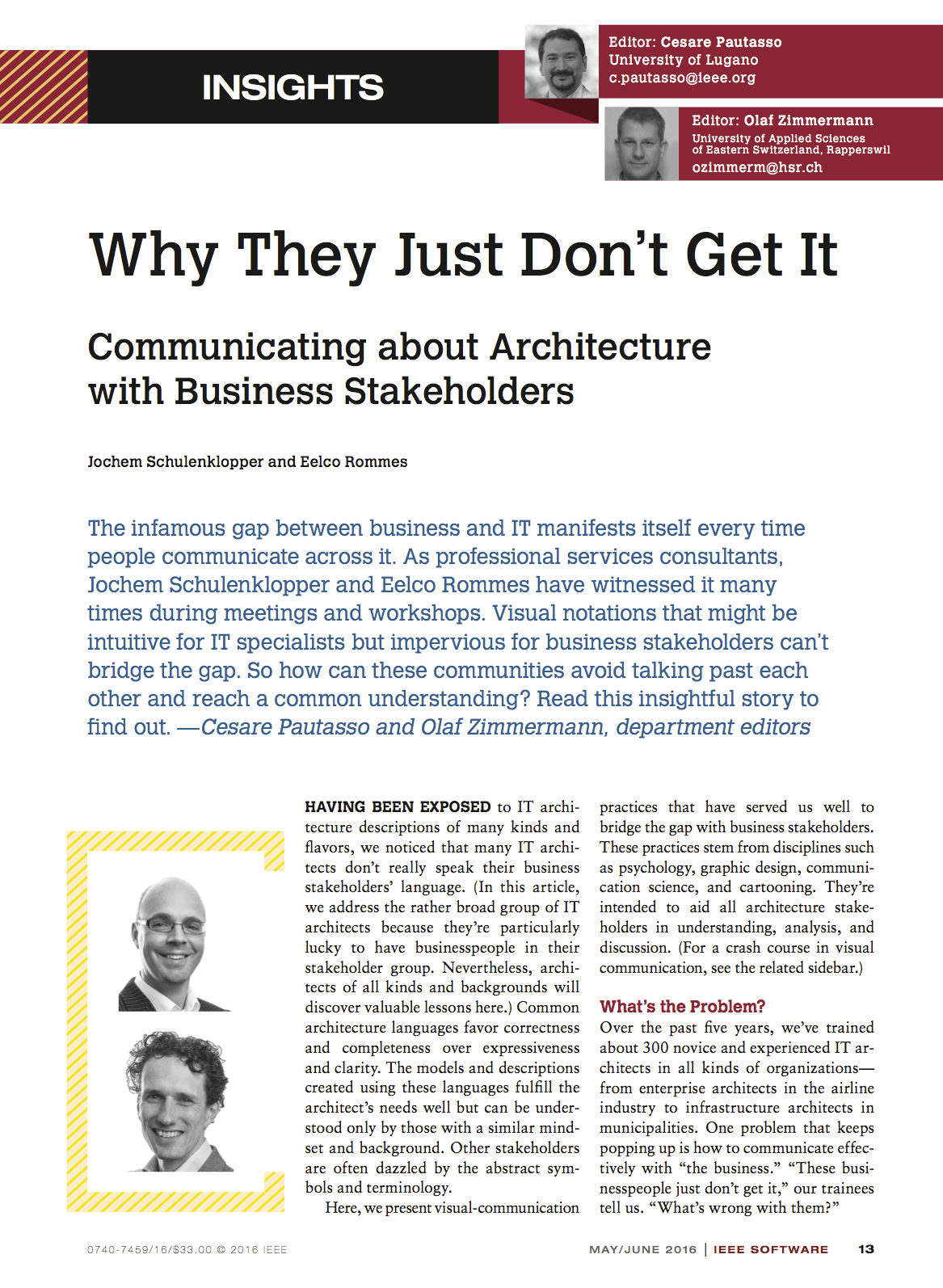 Why they just do not get it: Communicating about Architecture with Business Stakeholders
Why they just do not get it: Communicating about Architecture with Business Stakeholders Software Retrofit in High-Availability Systems: When Uptime Matters
Software Retrofit in High-Availability Systems: When Uptime Matters A Decade of Enterprise Integration Patterns: A Conversation with the Authors
A Decade of Enterprise Integration Patterns: A Conversation with the Authors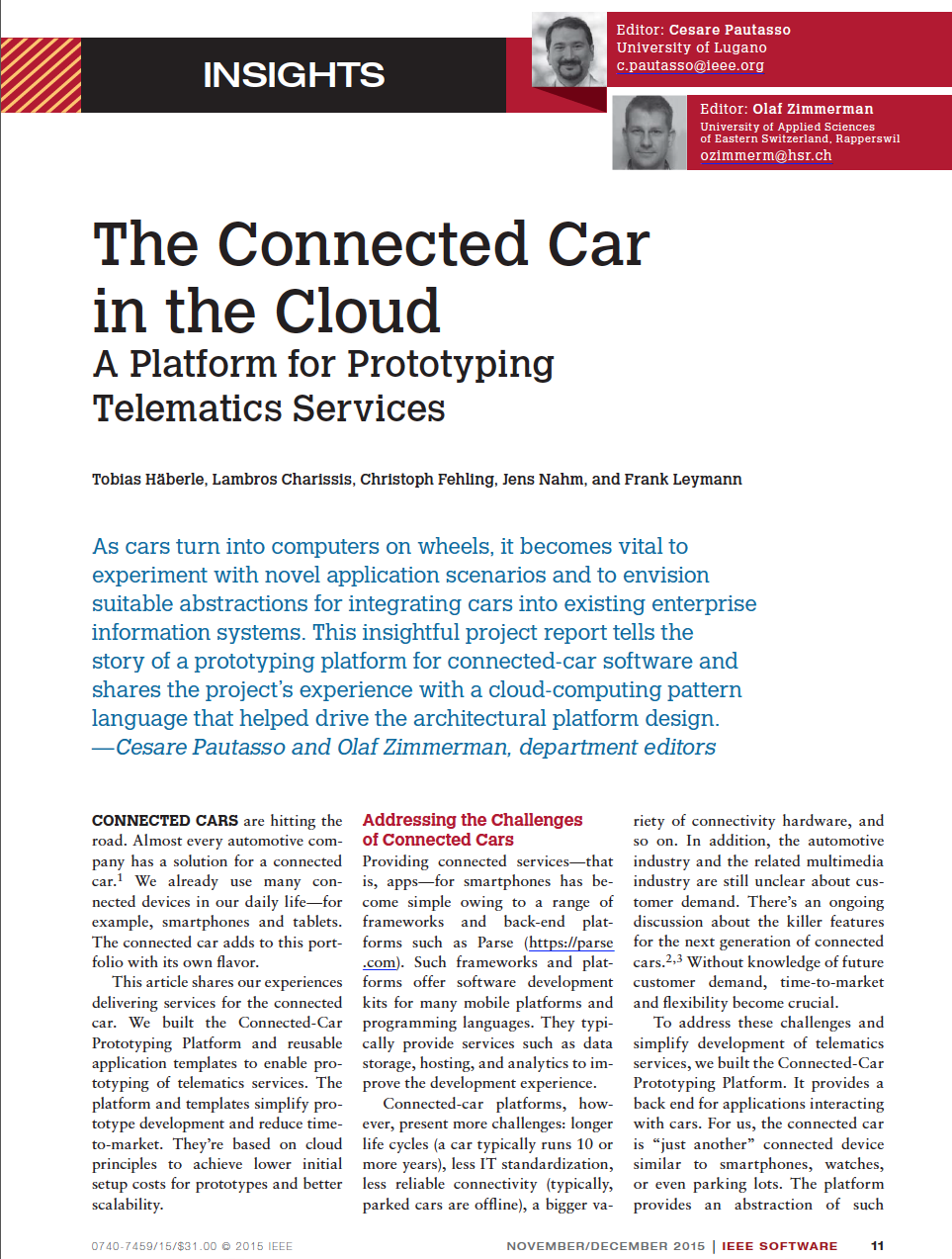 The Connected Car in the Cloud: A Platform for Prototyping Telematics Services
The Connected Car in the Cloud: A Platform for Prototyping Telematics Services Context Is King: What’s Your Software’s Operating Range?
Context Is King: What’s Your Software’s Operating Range?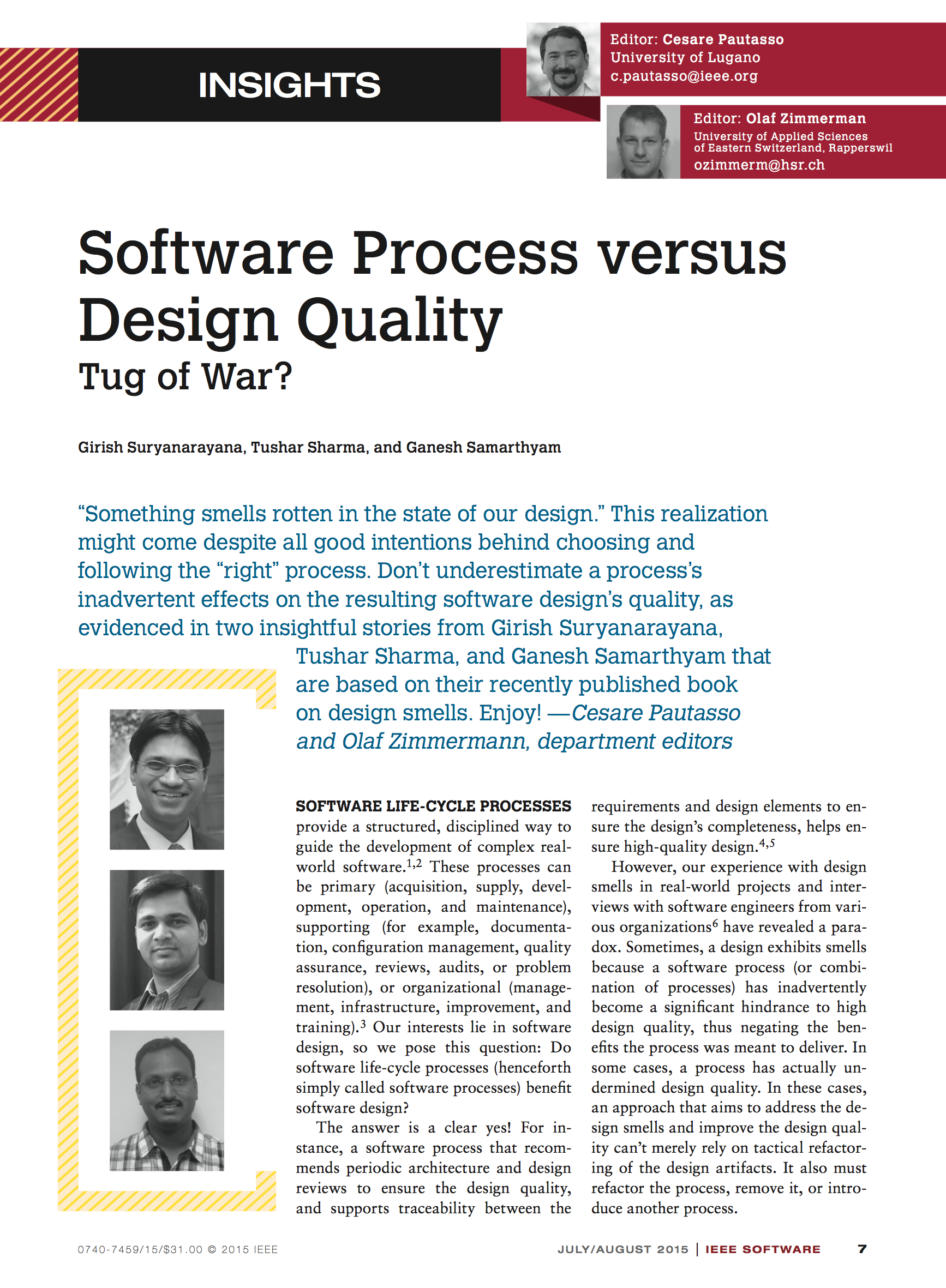 Software Process versus Design Quality: Tug of War?
Software Process versus Design Quality: Tug of War? Lightweight and Flexible: Emerging Trends in Software Architecture from the SATURN Conferences
Lightweight and Flexible: Emerging Trends in Software Architecture from the SATURN Conferences